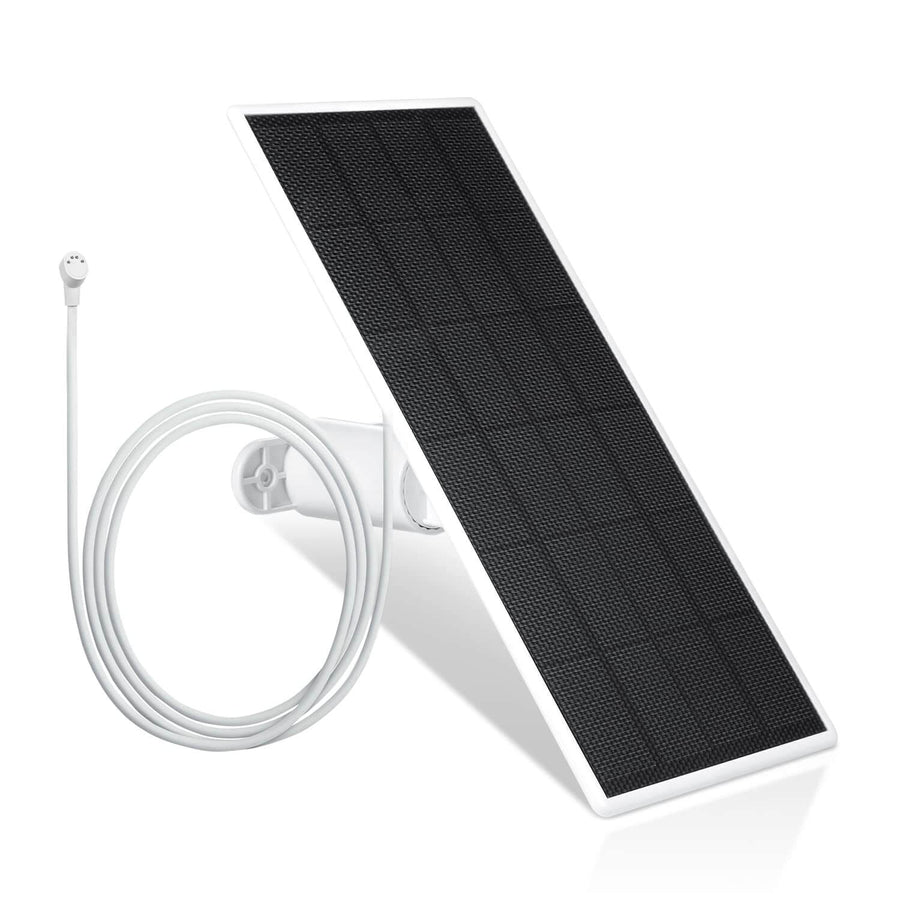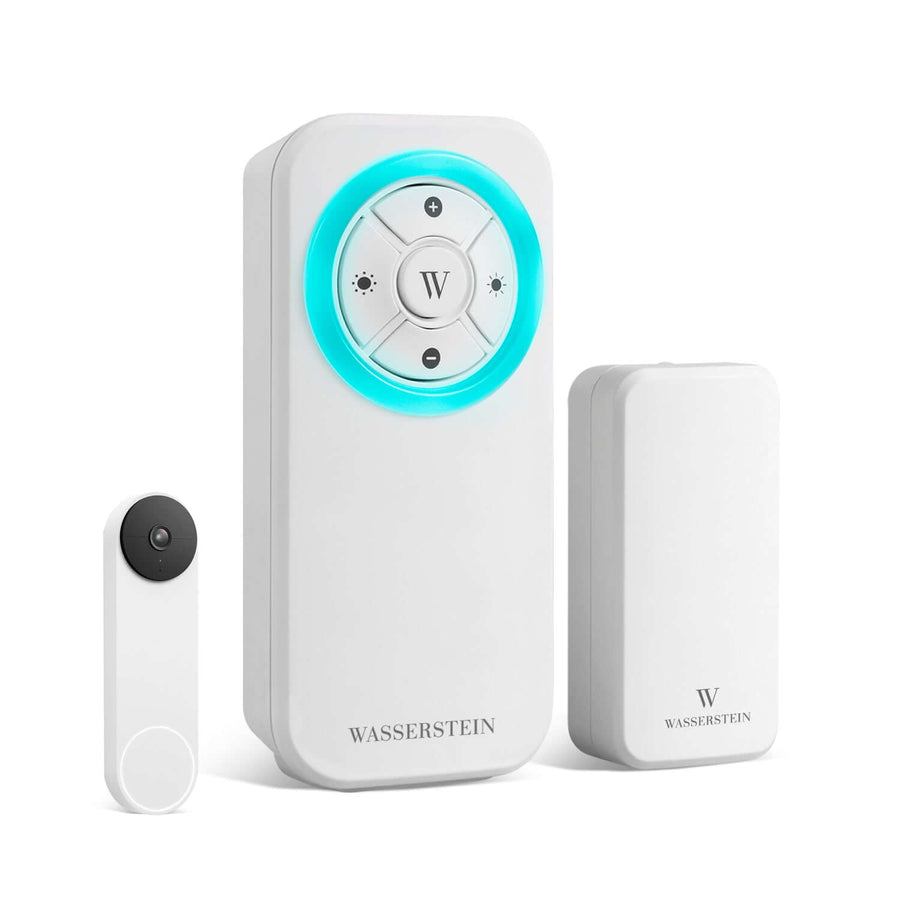Blink vs Ring — Which Brand Is Better for Home Security?
In today's rapidly advancing world, home security has become a top priority for homeowners. Choosing the best brand can be difficult because there are so many options for smart home security systems. Blink and Ring—both Amazon-owned brands—are two of the market's leading competitors. Both provide a selection of cutting-edge security products aimed at protecting and safeguarding your property. While both offer high-quality security cameras, video doorbells, and advanced monitoring options, they cater to different needs and budgets. Notably, both Blink and Ring cameras provide 1080p HD video resolution, ensuring clear and detailed footage.
If you’re considering a new security system and debating between Blink vs Ring, this guide will provide a comprehensive comparison of their products, features, and value to help you decide which is the better fit for your home.
Background and Overview
Blink

Founded in 2014, Blink quickly became known for its affordable and easy-to-install security cameras with impressive battery life multiple security cameras. Its focus on simplicity and low cost made it popular among homeowners seeking basic but reliable security solutions. Blink cameras are usually cheaper and focus on providing affordable security solutions, making them an attractive option for budget-conscious users.
Amazon acquired Blink in 2017, enabling deeper integration with Alexa and expanding Blink’s product lineup. Blink’s battery-powered cameras can last up to two years on AA batteries, making them low-maintenance and ideal for DIY installation.
The Blink App allows users to view live feeds, receive motion alerts, and use two-way audio without requiring a subscription. However, advanced features like cloud storage are available with a paid plan. Blink’s strength lies in offering reliable, affordable security with minimal complexity.
Ring

Ring started as Doorbot in 2013 when founder Jamie Siminoff pitched the idea of a video doorbell on Shark Tank. Despite initial rejection, the concept gained traction, and the first Ring Video Doorbell launched in 2014, revolutionizing home security with real-time video and two-way communication.
Amazon acquired Ring in 2018 for approximately $1 billion, expanding Ring’s product range to include doorbells, cameras, and security systems. Ring’s premium features, including color night vision, person detection, and smart home integration with Alexa, set it apart from other Blink devices.
Through the Ring App, users can control multiple devices, set custom motion zones, and receive advanced alerts. The Ring Protect subscription unlocks professional monitoring and cloud storage, making Ring a complete home security solution with more advanced options than Blink.
Product Range and Pricing
Blink

The Blink Outdoor 4 is the brand's current flagship outdoor security camera
Blink’s product lineup is focused on simplicity and affordability, with options for both indoor and outdoor use. The range includes:
- Blink Indoor – A compact, battery-powered indoor camera with 1080p resolution and motion detection.
- Blink Outdoor Cameras – Weather-resistant version of the Blink Indoor, also with 1080p video and up to two years of battery life.
- Blink Mini – A small, plug-in indoor camera offering 1080p resolution and two-way audio.
- Blink Video Doorbell – Provides live video and two-way audio communication at the front door. Can be hardwired or battery-powered. The Blink Video Doorbell has a field of view of 135 degrees.
- Blink Floodlight Camera – Combines an HD security camera with two powerful LED floodlights for enhanced night monitoring.
- Blink Sync Module – Allows Blink cameras to store video locally without a subscription. Supports up to 10 cameras on a single module.
Price Range: $39.99 – $159.99. The Blink Video Doorbell is priced at $59, making it an affordable option for homeowners.
Best For: Budget-conscious users seeking affordable cameras with long battery life and local storage options.
Ring

Ring's lineup of doorbell cameras is among the best in the market
Ring offers a more extensive lineup of home security cameras and smart home devices, focusing on premium features connecting multiple security cameras and deeper smart home integration. Ring cameras typically have a wider field of view than Blink cameras, with some Ring models offering a 155-degree field of view compared to Blink's 135-degree.
- Ring Video Doorbells – A line of Ring doorbell cameras that can be connected to existing wiring or solar panels for continuous power.
- Ring Stick Up Cam – A versatile, battery-powered Ring camera suitable for indoor or outdoor use. Also available as a plug-in or solar-powered version.
- Ring Indoor Cam – A compact, plug-in camera designed for indoor use with HD video and two-way audio.
- Ring Floodlight Cam – A weatherproof outdoor camera with built-in LED floodlights, two-way audio, and a siren.
- Ring Alarm Security System – A complete home security system with a base station, motion detectors, door/window sensors, and optional professional monitoring.
- Ring Spotlight Cam – Similar to the Floodlight Cam but more compact, with integrated lights and a siren.
- Ring Stick Up Cam - A versatile camera that can be used indoors or outdoors. It can be placed on a flat surface or mounted on a wall.
- Ring Protect – A subscription service that enables cloud storage, smart alerts, and professional monitoring.
Price Range: $64.99 – $279.99 (higher for bundled kits and accessories). Both Ring and Blink charge $10 per month for unlimited camera cloud storage coverage on their Plus plans.
Best For: Homeowners seeking advanced smart home integration, high-end video quality, and professional monitoring options.
➡️ Winner: Blink for affordability; Ring for variety and advanced features.
Installation and Setup
Blink

Blink security cameras are designed for easy DIY installation, typically taking less than 10 minutes to set up. Installing Blink and Ring cameras generally takes two to five minutes each, with Blink being particularly user-friendly.
Setup Process:
- Download the Blink Home Monitor App – Guides you through the installation process.
- Set Up the Sync Module – Connects cameras to the app and allows local storage.
- Add Cameras – Scan the QR code to pair with the app and Wi-Fi.
- Mount Cameras – Battery-powered models can be mounted with adhesive or screws.
- Adjust Settings – Customize motion detection, audio, and video quality in the app.
- Test and Finalize – Ensure strong Wi-Fi and proper motion detection.
- Requires connecting to an electrical source and mounting the bracket.
- May require turning off the circuit breaker.
- Simple, wireless setup.
- No professional installation needed.
- Sync Module supports multiple cameras.
- Sync Module required for local storage.
- Wired models need electrical work.
Ring

Ring offers battery, wired, and solar-powered options, making installation more flexible but sometimes more complex.
Setup Process:
- Download the Ring App – Walks you through setup and settings.
- Connect to Wi-Fi – Direct connection; app provides troubleshooting if needed.
-
Mount Cameras:
- Battery models – Adhesive or screws.
- Wired models – Requires drilling and wiring.
- Solar models – Position for sunlight exposure.
-
Set Up Power Source:
- Battery – Insert and secure.
- Wired – Connect to electrical system.
- Solar – Connect solar panel to camera.
-
Adjust Settings:
- Customize motion zones, recording length, and audio.
-
Test and Finalize:
- Ensure clear video and strong signal.
- Floodlight – Requires existing wiring.
- Doorbell – Can connect to wiring or work with Ring Chime for indoor alerts.
- Flexible power options.
- Detailed customization in the app.
- Wired and solar models may require professional installation.
- More complex than Blink.
Video Quality and Performance
Blink

Blink's security cameras provide 1080p HD resolution across all models, delivering clear daytime footage. However, they lack HDR (High Dynamic Range), which reduces detail and color depth in bright or high-contrast lighting.
- Frame Rate: Limited to 30 FPS (frames per second), leading to slight blurring of fast-moving objects.
- Night Vision: Uses infrared (IR) night vision for black-and-white footage in low-light conditions.
- Color and Detail: Good color accuracy during the day, but limited contrast and muted tones due to the lack of HDR.
- Audio: Two-way audio available, but background noise can interfere with clarity.
➡️ Best for: Basic, reliable video performance with long battery life.
Ring

Ring cameras also offer 1080p HD resolution but with HDR for enhanced brightness, color depth, and contrast.
- Frame Rate: Higher frame rates (up to 60 FPS) allow for smoother video and clearer motion.
- Color Night Vision: Uses ambient or built-in lighting to deliver color footage at night, improving detail.
- Color and Detail: Enhanced color accuracy and sharpness, even in bright or backlit conditions.
- Audio: High-quality two-way audio with noise cancellation for clearer conversations.
➡️ Best for: High-end video quality, smooth motion capture, and enhanced night vision.
➡️ Winner: Ring for superior video quality, color night vision, and smoother motion capture.
Smart Home Integration
Blink
Blink integrates with Alexa and Fire TV, allowing users to control cameras using voice commands or view live feeds on compatible smart displays and TVs.
- Through Alexa, you can say, "Alexa, show me the front door" to pull up the live feed from your Blink Video Doorbell or Blink Outdoor camera.
- You can also use Alexa to arm or disarm the system, adjust camera settings, and enable motion alerts.
- However, Blink does not support deeper smart home automation like controlling smart locks, lights, or thermostats.
➡️ Best for: Basic smart home integration focused on camera control.
Ring
Ring offers more advanced smart home integration through its compatibility with Alexa and other smart home devices.
- Works with Alexa for voice control, including live view access, two-way audio, and arming/disarming.
- Ring devices can be linked with smart locks (like Schlage and Yale), smart lights, and other smart home systems.
- With a Ring Protect subscription, you can enable person and package detection, automate lights when motion is detected, and link cameras to other smart home systems.
- Ring also integrates with Fire TV for live streaming and alerts on smart TVs.
➡️ Best for: Comprehensive smart home automation and integration with other smart devices.
Winner: Ring for better smart home integration and automation.
Two-Way Audio and Alerts
Blink

Blink provides basic two-way audio and motion-activated alerts.
- The two-way audio allows you to speak with visitors through the Blink app.
- The audio quality is clear but lacks noise cancellation, which can result in background noise interference.
- Blink cameras send push notifications when motion is detected, but they cannot distinguish between people, packages, or other types of motion.
➡️ Best for: Basic communication and using motion sensors and alerts.
Ring Ring offers higher-quality audio and more advanced alert options.
Ring offers higher-quality audio and more advanced alert options.
- Two-way audio includes noise cancellation, resulting in clearer conversations with less background noise.
- With a Ring Protect subscription, Ring adds person and package detection, reducing false alerts and providing more relevant notifications.
- You also receive rich notifications with photo previews, allowing you to see activity without opening the app.
➡️ Best for: Enhanced audio clarity and intelligent alerts.
Winner: Ring for superior audio quality and smarter notifications.
Cloud Storage and Local Storage Options
Blink
Blink supports both local and cloud storage, giving users more flexibility. The Blink Sync Module can support local storage for up to 256 GB through a removable USB, providing a cost-effective alternative to cloud storage.
- Local Storage: The Blink Sync Module 2 allows you to store video clips locally on a USB drive without a subscription.
-
Cloud Storage Plans:
- Basic Plan – $3/month or $30/year (one camera).
- Plus Plan – $10/month or $100/year (unlimited cameras).
- Without a subscription, you can still view live feeds and receive motion alerts, but you won’t have access to cloud storage or clip recording.
➡️ Best for: Cost-effective local storage and affordable free cloud storage plans.
Ring
Ring relies primarily on cloud storage unless paired with a Ring Alarm Pro for local storage.
- No Local Storage: Without a subscription, you can only access live streaming and motion alerts.
-
Ring Protect Plans:
- Basic Plan – $4.99/month or $49.99/year (one camera).
- Plus Plan – $10/month or $100/year (unlimited cameras).
- Pro Plan – $20/month or $200/year (includes professional monitoring).
- Cloud recordings are stored for up to 60 days.
➡️ Best for: Comprehensive cloud storage options with extended history.
Winner: Blink for local storage flexibility; Ring for better cloud storage options.
Battery Life and Power Options
Blink

Blink’s battery life is one of its biggest advantages.
- Battery-powered models (like the Blink Outdoor) can last up to two years on standard AA batteries.
- Battery life varies depending on recording frequency and environmental conditions.
- Blink also offers solar panel options to extend battery life.
- The Blink Wired Floodlight Camera requires direct wiring but supports continuous power.
➡️ Best for: Long battery life and low maintenance.
Ring

Ring offers more versatile power options but shorter battery life.
- Battery-powered models last up to six months on a single charge.
- Wired models (like the Ring Floodlight Cam) provide continuous power.
- Solar options are available for extended battery life.
- Rechargeable batteries can be removed and swapped out easily.
➡️ Best for: Flexibility with wired, battery, and solar options.
Winner: Blink for longer battery life; Ring for more power options.
Privacy and Security
Blink
Blink offers basic but effective privacy and security measures designed to protect user data and maintain user control over recordings.
- Data Encryption: All video and audio data are encrypted during transmission and storage, ensuring that unauthorized parties cannot access the footage.
- Local Storage: The option to store footage locally via the Blink Sync Module gives users more control over their data and reduces reliance on cloud storage, where breaches are more likely.
- Motion-Based Recording: Blink cameras only record when motion is detected, minimizing the risk of continuous surveillance and potential privacy intrusions.
- No Data Sharing: Blink does not share user data or footage with third parties, including law enforcement, without user consent.
- Limited Third-Party Access: Since Blink does not integrate with other smart home platforms (beyond Alexa), the chances of unauthorized access through third-party apps are lower.
➡️ Best for: Strong privacy controls and minimal exposure to data breaches.
Ring
Ring provides more advanced security features but has faced significant privacy controversies in the past.
- Data Encryption: Ring encrypts data during transmission and storage, adding an extra layer of protection.
- Two-Factor Authentication: Ring allows users to enable two-factor authentication (2FA) to prevent unauthorized access to the Ring app.
- Neighbors App: The Neighbors App allows users to share video footage with local law enforcement. While this enhances security, it raises concerns about user privacy and surveillance.
-
Privacy Incidents:
- In 2019, Ring faced backlash after reports surfaced that employees could access user videos without permission.
- There have been incidents of hackers gaining access to Ring cameras through weak passwords or unprotected networks.
- Custom Privacy Settings: Ring allows users to disable audio recording, set privacy zones, and limit motion detection to protect sensitive areas.
➡️ Best for: Advanced security features but with potential privacy trade-offs.
Winner:
- Blink for better privacy controls and limited third-party access.
- Ring for enhanced security features but with privacy concerns.
Subscription Value and Long-Term Costs
Blink
Blink offers some of the most affordable subscription options in the home security market while still allowing for free local video storage.
- Local Storage: The Blink Sync Module enables local storage on a USB drive, reducing the need for a subscription.
-
Subscription Plans:
- Basic Plan – $3/month or $30/year (covers one camera).
- Plus Plan – $10/month or $100/year (covers unlimited cameras).
- No Subscription Option: Even without a subscription, users can access live view, receive motion alerts, and store clips locally with the Sync Module.
- Cloud Storage: Recorded clips are stored for up to 60 days with a subscription.
- Overall Cost: Blink's lower subscription fees and option for local storage make it a more cost-effective solution for long-term use.
➡️ Best for: Budget-conscious users who want to avoid ongoing costs.
Ring
Ring’s subscription costs are higher, but the Ring Protect plans unlock premium features that enhance the user experience.
- No Free Storage: Without a subscription, users can only access live view and motion alerts — no video recordings are saved.
-
Subscription Plans:
- Basic Plan – $4.99/month or $49.99/year (covers one device).
- Plus Plan – $10/month or $100/year (covers unlimited cameras and includes extended warranties).
- Pro Plan – $20/month or $200/year (includes professional monitoring for the Ring Alarm System).
- Advanced Features: A subscription unlocks person and package detection, enhanced notifications, and the ability to store recordings for up to 180 days.
- Professional Monitoring: Available with the Pro Plan, allowing Ring to contact emergency services on the user’s behalf.
➡️ Best for: Unlocking premium features and professional monitoring.
Winner:
- Blink for affordability and free local storage.
- Ring for premium features and professional monitoring.
Customer Support and Reliability
Blink
Blink’s customer support is functional but inconsistent based on user feedback.
- Support Channels: Blink offers phone, email, and live chat support.
- Troubleshooting: Basic troubleshooting guides are available through the Blink app and website.
- Response Time: Some users have reported delays in response times, particularly during peak hours.
- Reliability: Blink cameras are generally reliable, but users have reported occasional connection drops and sensitivity issues with motion detection.
- Limited Professional Monitoring: Blink does not offer professional monitoring services, relying entirely on user management.
➡️ Best for: Low-maintenance users who don't require professional monitoring.
Ring
Ring offers stronger customer support and more reliable service overall.
- 24/7 Support: Ring provides 24/7 customer support via phone and the Ring app.
- Professional Monitoring: Available with the Ring Protect Pro Plan, where Ring agents can respond to alerts and contact emergency services.
- Consistency: Ring cameras are known for consistent performance, with fewer connectivity issues compared to Blink.
- User Community: The Neighbors App and Ring forums allow users to connect with other Ring owners for tips and troubleshooting.
➡️ Best for: Reliable performance and professional-grade support.
Winner:
- Blink for basic reliability and low-maintenance setup.
- Ring for consistent performance and 24/7 professional monitoring.
Pros and Cons Summary
Blink
✅ Affordable pricing
✅ Long battery life
✅ Local storage with Sync Module
✅ Easy DIY installation
❌ Limited smart home integration
❌ Lower video quality
❌ No professional monitoring
Ring
✅ High-quality video and audio
✅ Smart home integration
✅ Advanced alert features
✅ Professional monitoring available
❌ Higher subscription costs
❌ Privacy concerns
❌ More complex setup for wired models
Final Verdict — Which One is Better?
Choose Blink if:
✅ You want an affordable, easy-to-use system.
✅ Long battery life and local storage are priorities.
✅ You prefer a simple setup without complex smart home integration.
Choose Ring if:
✅ You need advanced smart home features and high-quality video.
✅ Professional monitoring and enhanced alerts are important.
✅ You want enhanced security features and customization.
🏆 Overall Winner:
- Ring for premium features, better video quality, and smart home integration.
- Blink for affordability, local storage, and long battery life.
FAQs
Is Ring more expensive than Blink?
Yes. Ring cameras cost more due to premium features like HDR, color night vision, and person detection.
Can you use Blink without a subscription?
Yes. Blink supports local storage through the Sync Module without a subscription.
Do Ring and Blink work with Alexa?
Yes. Both work with Alexa and Fire TV, but Ring offers deeper smart home integration.
Is Ring better for smart home integration?
Yes. Ring supports locks, lights, and more through Alexa and third-party integrations.
Which system is better for long-term savings?
Blink, due to lower subscription costs and the option for free local storage.








Leave a comment